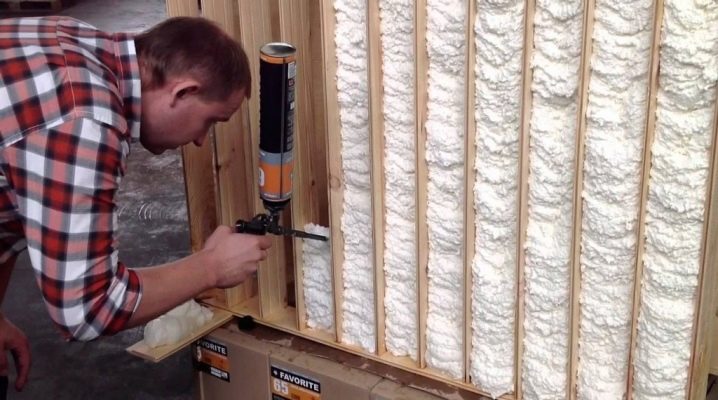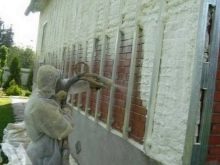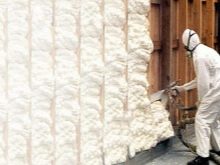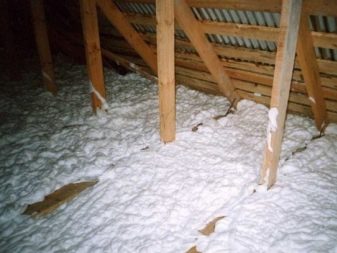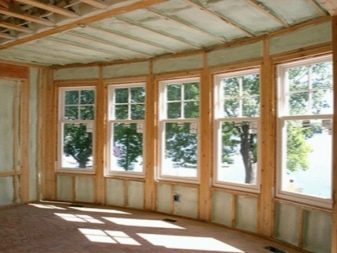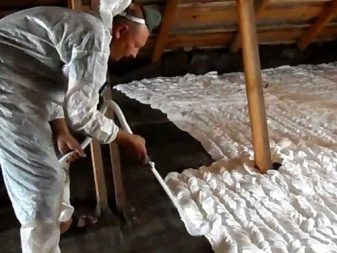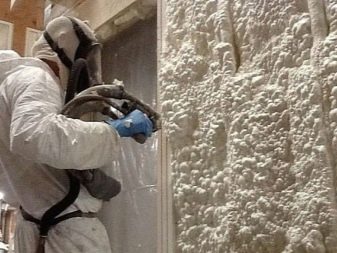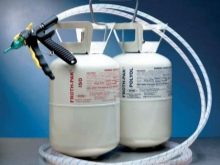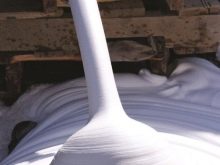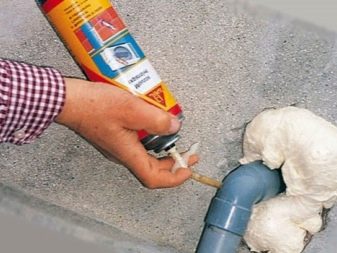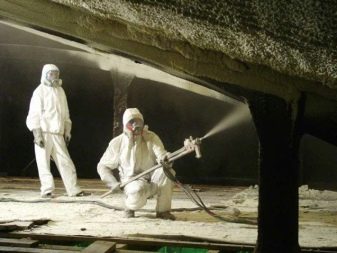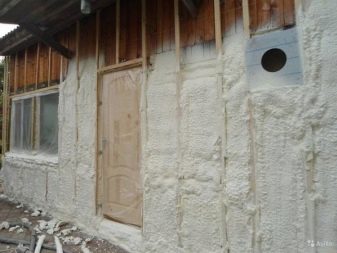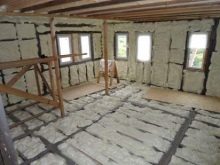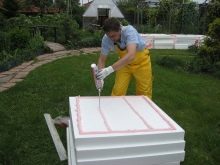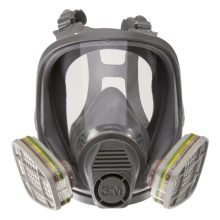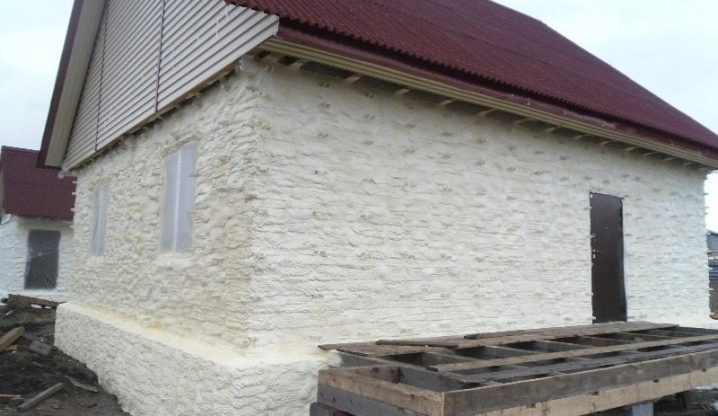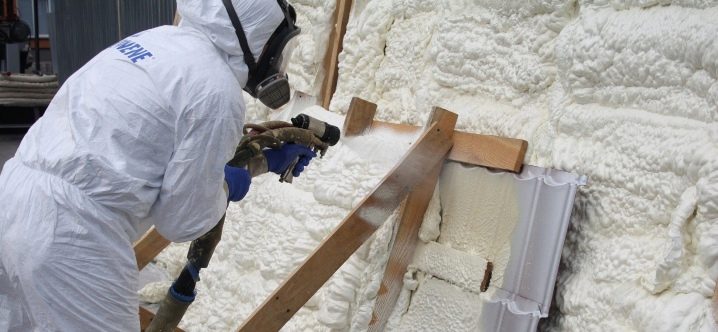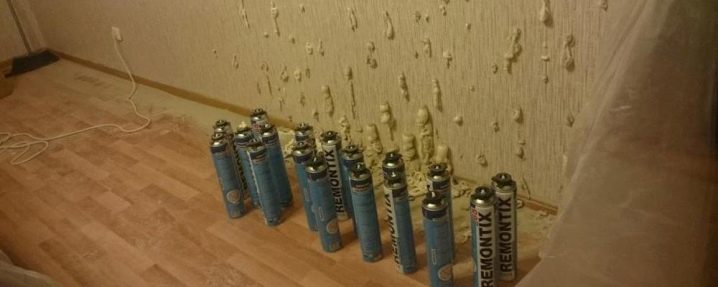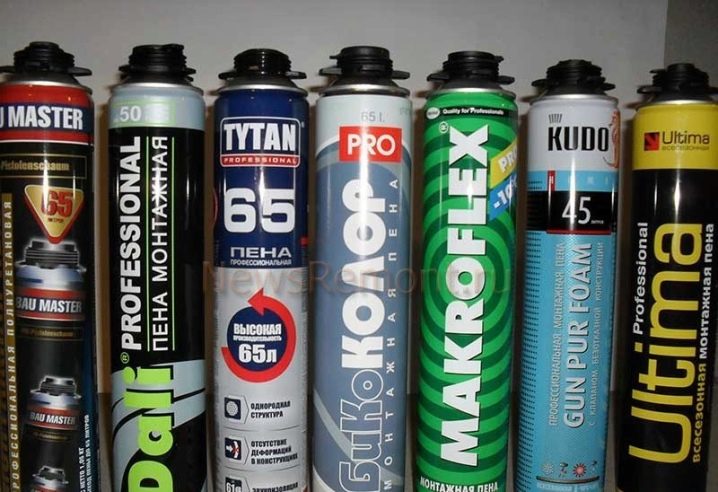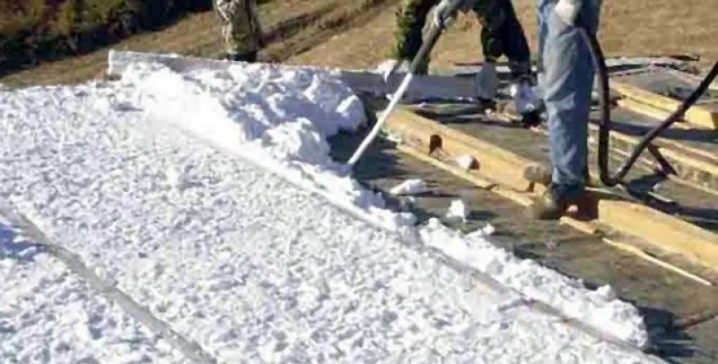Features of the use of foam for wall insulation
Very often, the issue of wall insulation arises in private homes, especially if they were built with their own hands. In order to achieve the best results with minimal effort and time, you must use the appropriate materials. The best of them at the moment is construction foam.
Special features
In order to insulate the walls in any home, it is best to use polyurethane foam. This type of foam hardens very quickly, which in a matter of hours makes it possible to obtain a dense surface that separates the interior of the room from external temperature changes, drafts and moisture penetration.
Of the main characteristics of the foam emit:
- heat resistance - the material can withstand heating up to eighty degrees;
- able to skip water if necessary;
- the possibility of providing vapor barrier;
- high level of strength;
- increases in volume after application.
When using this material, you can not worry that the design of the walls can easily ignite, because the foam in every way opposes it. With all the positive aspects of this material there is one negative point in it. It concerns the ability to freeze. If you fool anything in a closed space, it does not freeze. In addition, the high cost of this product does not allow everyone to use the foam to insulate the walls in the house.
With constant contact with the aquatic environment, this material begins to deteriorate and eventually becomes completely useless. The application of foam requires good ventilation, which means that it is necessary to create certain conditions for the work. This material has a low vapor permeability, so it is important to do forced ventilation in the room.
When applying foam four or more centimeters thick per square meter, you will need to use one balloon. In order to be able to do work properly and without risk to health, it is important to work with the use of an air gun.This is a special equipment that helps evenly spray the foam on a specific surface.
Such a gun mixes foam with gas and delivers it to the surface., evenly spraying where necessary. With the help of such a device you can independently adjust the intensity of the foam supply for more comfortable work. It is very convenient to use a pneumogun in operation, but not all resort to it due to the high cost of such equipment.
When applied to the surface, the foam does not form any seams, which is convenient and aesthetic. This material has minimal thermal conductivity. An important indicator is its environmental friendliness - no harmful substances enter the air when used. Any impact on the foam will be painless for her, she reacts poorly only to ultraviolet radiation.
Warming the room, it is desirable to take care of sound insulationwhich foam is also good at. In addition, it has good agdeziyu with the surface. Foam is easily applied to uneven surfaces, while the formation of air pockets is completely eliminated.Rapid hardening allows you to continue working after a day. Foam for wall insulation is a versatile and convenient option, with the help of which even a non-professional can do everything well and efficiently, the main thing is to follow safety precautions.
Kinds
Since the use of foam is becoming more frequent, it is not accidental that it will increase its types.
At the moment there are four types of foam, including:
- assembly;
- two-component polyurethane;
- liquid;
- penoizol.
If we talk about the mounting foam, it is a one-component substance that can be easily applied to the surface. There is such foam in cylinders and is fed out with the help of compressed gas. This option is the least suitable for wall insulation, because the applied layer has an open-type cellular structure that easily absorbs moisture and has low thermal conductivity.
Use this type of foam is recommended for small areas.that need to close, remove cracks, cracks or eliminate the draft, and for a large amount of work only a two-component substance is needed.Two substances that enter into the reaction allow the finished material to foam and increase in volume. Such cells already have a closed type and very quickly freeze.
Two-component mixture, which is also called polyurethane, is a type of foam, which is the most suitable option for wall insulation. Penoizol has similar characteristics, but their compositions are completely different. When foam is applied to the surface, the resin is mixed with a hardener, and the foaming process occurs due to air compression.
Industrial foam is a suitable material for wall insulation in any building. Such eco insulation will allow you to get maximum results without any harm to health. A simple polyurethane foam is suitable for filling a small profile, but for large areas the material should be different.
Two-component insulating foam will be the best choice for work on the entire surface of the wall.
Scope of application
Due to the variety of foam options, you need to know exactly where to use it. With the help of penoizol, you can make the insulation of a frame room.
With it, you can fill the spaces between:
- walls both outside and inside;
- walls and plastic coating;
- walls and plasterboard;
- floor and new flooring.
It is the use of wet insulation allows you to create a good protection of the facade of the house. All precipitation and external factors that will act on it outside will not affect the quality of the material and will not spoil it.
Polyurethane foam is used to fix the plates, which are made of solid materials with good thermal insulation and fill the seams between them. This can help with laying the foundation and ceiling installation. Using polyurethane, it is best to seal small gaps, fill cavities when installing windows or pipes, this material also helps from cracks on the walls themselves.
Good results can be achieved with insulation using polyurethane foam frame house, its roof, attic, facade and even the basement. In the winter, it is very important to take care of all problem areas, so that in severe frosts you do not feel drafts and do not risk the integrity of the house, which can crack from large temperature drops.
Application details
Any repairs require skills and abilities, without which it is difficult to achieve good results. The same can be said about working with foam. It is recommended to work with this material only to those who know what to do with it and can work with it.
If this is not possible, then it is necessary to take into account a few basic nuances that will help facilitate the work and make it safer:
- any work must begin with preparation;
- Before applying the substance, you must read the instructions and use protective equipment for the face and hands;
- final works require a specific procedure that should not be violated.
Planning to seal holes in the walls, irregularities and cracks, no big preparatory work will be needed. In order to put the foam where it is needed, it is important to create a frame on the wall, which will be divided by strips into compartments, each of which will be filled in turn. After creating the crates, you need to devote time to protective measures and prepare for the use of foam.
It is advisable to purchase a special protective suit, have gloves and a face mask.It is very undesirable to allow foam to hit the surface of the skin, because it will not work out either with solvents or other substances, and it will not disappear for a long time.
In that case, if the wall is already finished, then for its insulation two holes are made for the hose, in the middle and at the top, and the process of filling the voids starts from the bottom up. Holes must be sealed, when they are no longer needed in the work, otherwise the foam from them will begin to flow. The substance is applied at a distance of thirty centimeters, after which there is a check of the expansion of the material in the cavity of the wall. If it is insufficient, then you need to add a little more foam on top.
In a closed wall, it is difficult to see the state of filling the cavity and it is almost impossible to understand when it is necessary to lift the hose, because the easiest way to fix it is to fix it and remove it after completion of the work. The final stage is characterized by waiting for the complete solidification of the material, which can reach three days. It is very important to constantly ventilate the room so that fresh air circulates in it. When everything is completely dry, you need to level the foam and then sew it up with a sheet of drywall.
If there is no need to use additional material, it is possible to apply plaster on the leveled foam and bring it to the desired appearance of the finished surface. Frozen foam is quite dense, because it does not necessarily hide behind any additional materials, mechanical damage to it is not terrible, because the immediate decoration would be the most logical and inexpensive option. In the case of filling the gaps at the end of the work you need to remove the protection and eliminate the leakage, if any.
Applying foam with your own hands is facilitated by using an appropriate apparatus that helps distribute the material between the profiles, which gives the best result.
Installation of such profiles will be mandatory for any surface., be it a wall or a ceiling. It is important that the foam comes into contact with the frame and is securely attached to it, ensuring the strength of the structure. Spray foam will foam in the course of work, because it is important to monitor the amount of material that is applied. Best of all, if the surface layer of the entire wall or ceiling will turn out to be as uniform as possible, which will relieve from additional measures to level it.
Tips
Each master has his own secrets in working with foam, which he does not reveal to anyone, but for beginners they will not be so important.
In this case, you must strictly follow the basic rules and recommendations that will help to achieve the desired result:
- Acquisition of polyurethane foam only in specialized stores where they sell licensed goods with optimal shelf life. It is best to calculate the required amount of substance and buy everything at once. Quite often in such stores you can buy or even rent the necessary equipment for work.
- To work with foam, it is worthwhile to initially consider the ventilation system, because without good ventilation, hardening of the foam will be difficult and the quality of work will be poor.
- It is not necessary to work without a protective suit and a mask; any contact of the substance with the skin will be extremely undesirable, and it is especially dangerous if it hits the face.
- Before filling a large space, it is necessary to check the percentage of expansion of the foam in order to navigate the size of the layer to be applied to the surface.
It is possible to warm the wall with foam with the necessary equipment, important knowledge and compliance with safety rules.It is better to start the work of such a plan with covering up small cracks and holes in order to learn how to work with an air pistol, to understand the principle of applying material to the surface. For large volumes it is important to build a lining, which will be gradually filled.
When choosing foam in a store, it is important to pay attention to the containers in which it is sold.
There are a variety of options for their volume. This is necessary in order not to buy too much if you need to repair just one crack or hole, or not to collect a huge number of cylinders when there is a lot of work to be done. The choice of a particular brand is already a personal matter, but it is recommended to purchase products of more well-known brands. They monitor the quality of products much more carefully.
The process of wall insulation using foam, see the following video.
